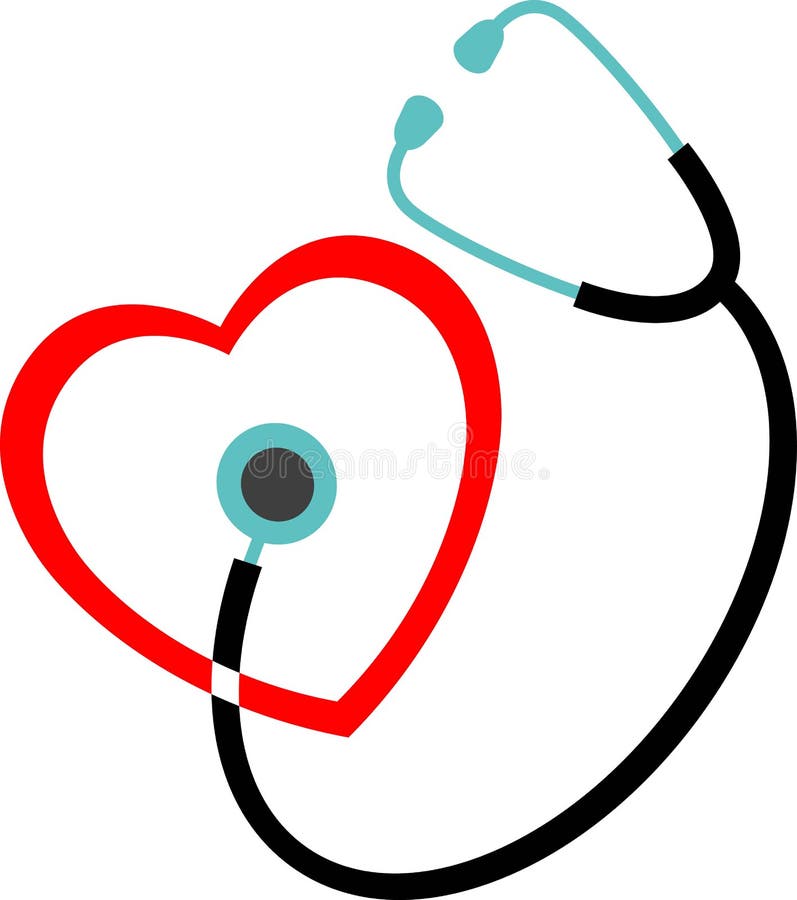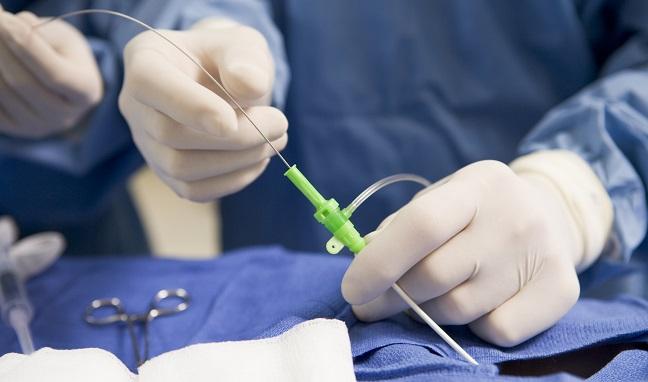5 ways Dr Garcia recommends improving your heart health today
5 ways Dr Garcia recommends improving your heart health today
Blog Article
Recognizing the Significance of Cardiology in Modern Healthcare Services
Cardiology plays a vital function in modern medical care, specifically as heart illness continues to be the leading reason for death worldwide. Breakthroughs in diagnostics and therapy have transformed client care, enabling earlier treatments and boosted results. The shift in the direction of preventative cardiology equips individuals to handle their health proactively. As technology continues to develop, the assimilation of innovative remedies may even more redefine cardiology's influence on public health, triggering a more detailed assessment of arising fads and their implications.
The Occurrence of Heart Condition and Its Influence On Public Wellness
Although heart problem stays the leading reason of death globally, its influence prolongs far beyond private patients to affect public wellness systems and economic situations. The high occurrence of cardiovascular disease positions a significant strain on health care sources, demanding boosted funding for avoidance, rehab, and treatment programs. Public health and wellness efforts must deal with threat aspects such as obesity, smoking, and inactive way of lives, which add considerably to the climbing occurrence of heart conditions.Moreover, the economic worry associated with heart problem is tremendous, including not just direct medical prices yet also indirect costs associated with lost efficiency and early mortality. Areas deal with difficulties in managing these prices, commonly resulting in variations in healthcare access and outcomes. As the population ages and lifestyle-related risks proceed to rise, the necessity for reliable cardiology interventions ends up being paramount. Attending to heart illness is not just a matter of private wellness yet also an important public health top priority.
Developments in Cardiac Diagnostics and Imaging Techniques
Recent improvements in cardiac diagnostics and imaging methods have reinvented the area of cardiology, improving the ability to monitor and detect cardiovascular disease. Methods such as heart MRI, CT angiography, and echocardiography have become significantly innovative, offering detailed pictures of heart frameworks and functions. These techniques permit the very early identification of conditions like coronary artery illness, cardiac arrest, and valvular disorders.Moreover, innovations in non-invasive diagnostics, such as wearable technology and remote surveillance devices, have empowered clients and healthcare suppliers. These devices help with real-time tracking of heart rhythms and various other crucial indicators, causing timely interventions. Additionally, expert system is being incorporated right into imaging analysis, boosting precision and performance in medical diagnosis.
Technologies in Treatment Alternatives for Heart Issues
Recent innovations in cardiology have actually brought about substantial advancements in treatment options for heart disease. These include sophisticated surgical methods that improve step-by-step end results and arising medicines that provide new methods for treatment. As the area develops, these innovations play a vital duty in boosting individual treatment and end results.
Advanced Surgical Techniques
Technologies in medical methods have actually transformed the landscape of cardiology, supplying brand-new wish for people with heart problems. Minimally invasive treatments, such as catheter-based interventions, have actually substantially decreased healing times and health center remains. Methods like robotic-assisted surgery enhance accuracy, enabling surgeons to browse intricate physiological structures with greater precision. Improvements in imaging innovation promote real-time visualization during treatments, enhancing end results. Transcatheter aortic valve replacement (TAVR) exemplifies an innovation in treating aortic constriction, enabling shutoff replacement without open-heart surgical procedure. In addition, hybrid approaches that integrate surgical and catheter-based techniques offer tailored options for numerous heart problems. These sophisticated surgical techniques not only enhance client security however likewise increase therapy alternatives, underscoring the vital duty of development in modern-day cardiology techniques.
Emerging Treatments and medicines
As the landscape of cardiology proceeds to develop, arising treatments and drugs play a pivotal role in improving treatment options for heart conditions. Developments such as unique anticoagulants and progressed lipid-lowering representatives have actually transformed the management of heart diseases, significantly reducing client morbidity and mortality. Furthermore, the advancement of genetics therapies and regenerative medication provides appealing avenues for treating conditions previously deemed irreversible. Clinical tests are constantly revealing the efficiency of these treatments, pushing the boundaries of traditional therapies. Additionally, the integration of digital health and wellness technologies helps with individualized medicine, enabling tailored therapy strategies based upon genetic and lifestyle aspects. Jointly, these advancements underscore the vibrant nature of cardiology, improving client results and redefining criteria of treatment in contemporary medical care.
The Duty of Preventive Cardiology in Client Treatment
Preventative cardiology plays a vital role in patient care by focusing on the identification of risk variables that add to cardiovascular disease. Through lifestyle adjustment methods and early discovery methods, doctor can effectively minimize the incidence of cardio events - Cardiology. This proactive technique not only enhances patient results yet likewise advertises lasting health and wellness
Threat Factor Recognition
While cardio conditions stay a leading source of morbidity and death worldwide, reliable danger variable identification works as a keystone of preventative cardiology. Identifying threat elements such as high blood pressure, household, diabetic issues, and hyperlipidemia history is necessary for early treatment. Health care professionals make use of various screening techniques to assess these variables, enabling tailored safety nets. Furthermore, comprehending a client's way of life choices, such as cigarette smoking and physical inactivity, further notifies danger analyses. This thorough examination enables clinicians to create personalized treatment strategies focused on mitigating dangers. By prioritizing threat factor recognition, medical care systems can boost person results and reduce the total burden of cardio illness, inevitably contributing to improved public wellness strategies and source allowance.
Way Of Life Modification Methods
A wide variety of researches highlights the important role of way of living alteration approaches in reducing heart disease threat. These techniques incorporate nutritional modifications, raised exercise, smoking cessation, and weight management. By embracing a heart-healthy diet abundant in fruits, vegetables, entire grains, and lean proteins, individuals can lower cholesterol degrees and blood stress. Routine physical task strengthens the heart and boosts total cardio health. Furthermore, quitting smoking substantially minimizes the danger of heart illness and boosts recuperation rates for those with current conditions. Weight monitoring even more adds to cardiovascular wellness by mitigating other danger variables such as diabetes mellitus and hypertension. Implementing these lifestyle alters not just promotes private wellness yet likewise functions as a foundation of preventive cardiology in individual treatment.
Early Discovery Strategies
Lifestyle alterations substantially add to lowering heart disease dangers, yet they are most reliable when paired with very early discovery strategies. Preventive cardiology highlights the relevance of determining prospective heart concerns prior to they intensify into severe conditions. Strategies such as high blood pressure surveillance, cholesterol testing, and advanced imaging modern technologies like echocardiograms play essential functions in evaluating cardio health and wellness. Biomarkers and genetic testing also improve the precision of very early discovery, permitting tailored preventative methods. Regular cardiac threat assessments equip medical care suppliers to intervene proactively, potentially avoiding cardiovascular disease and strokes (Cardiology). By integrating these early detection approaches into routine treatment, patients can take advantage of prompt lifestyle treatments and targeted treatments, eventually enhancing outcomes and improving high quality of life
Integrating Technology Into Cardiology Practices
As innovations in innovation continue to reshape different areas, the combination of ingenious tools and systems right into cardiology methods has actually ended up being vital for enhancing person treatment and results. Telemedicine systems allow cardiologists to monitor patients from another location, improving accessibility to care while minimizing the worry on medical care facilities. pop over here Wearable tools, such as smartwatches, allow continuous heart rate monitoring, signaling both medical professionals and patients to prospective concerns in real-time. Furthermore, expert system (AI) is being utilized to evaluate substantial amounts of heart data, helping in very early medical diagnosis and customized treatment strategies. Advanced imaging techniques, consisting of 3D echocardiography, improve visualization of heart structures, bring about extra precise interventions. Electronic wellness documents (EHRs) improve client details administration, making certain that cardiologists have prompt accessibility to crucial data. With each other, these technological improvements are changing cardiology, advertising positive management and boosted wellness end results for people with cardio conditions.
The Significance of Person Education and Involvement
Client education and involvement play a crucial duty in the management of cardio health and wellness. By outfitting patients with knowledge about their conditions, therapy alternatives, and lifestyle modifications, medical care companies equip people to take an active function in their care. This proactive method can lead to boosted adherence to suggested drugs, dietary changes, and workout regimens, ultimately decreasing the danger of complications.Engagement additionally promotes a strong patient-provider connection, motivating open interaction and count on. When individuals feel educated and entailed, they are much more most likely to voice worries and ask questions, which can bring about much better medical results. In addition, academic resources, such as workshops or electronic platforms, can boost understanding and promote self-management approaches. Generally, prioritizing individual education and involvement is essential for enhancing cardiovascular health and wellness, improving lifestyle, and decreasing medical care prices connected with heart diseases.
Future Fads in Cardiology and Their Possible Influence

Frequently Asked Inquiries
What Way Of Living Modifications Can Reduce Heart Problem Risk?
The existing inquiry addresses way of living changes that can considerably lower heart problem threat. Cardiology care. Adopting a balanced diet plan, taking part in normal exercise, preserving a healthy and balanced weight, managing tension, and preventing tobacco can especially boost cardiovascular wellness
Exactly How Can I Acknowledge Very Early Indicators of Heart Troubles?
Identifying early indicators of heart problems includes tracking signs and symptoms such as breast pain, shortness of breath, fatigue, and uneven heartbeat. Timely recognition of these indications can motivate required clinical assessment and treatment for better outcomes.
What Are the Differences In Between Cardiologists and Cardiac Surgeons?
The differences in between cardiologists and heart specialists hinge on their functions; cardiologists mostly handle and diagnose heart problems via non-invasive approaches, while cardiac cosmetic surgeons carry out surgical procedures to deal with architectural heart issues. Each plays a vital, distinctive role.

How Usually Should I Obtain My Heart Wellness Checked?
The frequency of heart wellness checks varies based on specific risk aspects. Usually, adults should undergo evaluations every one to two years, while those with current problems may require more regular assessments as encouraged by health care experts.
What Duty Does Genetics Play in Cardiovascular Disease Threat?
Genes substantially influences heart disease risk, with domestic patterns showing acquired problems. Specific genes can incline individuals to hypertension, cholesterol problems, and various other cardio issues, highlighting the significance of genetic screening in evaluating heart health. Heart condition stays the leading cause of fatality around the world, its effect expands much past individual people visit to influence public wellness systems and economies. Public health campaigns should attend to risk variables such as excessive weight, smoking cigarettes, and less active lifestyles, which add significantly to the rising incidence of heart conditions.Moreover, the redirected here economic problem linked with heart disease is immense, incorporating not just direct clinical costs yet likewise indirect expenses connected to lost efficiency and premature death. Preventive cardiology plays a necessary function in person care by focusing on the recognition of risk variables that contribute to heart disease. Fabricated knowledge (AI) and maker learning are boosting diagnostics and patient surveillance, making it possible for early detection of heart diseases. The differences between cardiologists and cardiac specialists exist in their functions; cardiologists largely identify and manage heart problems through non-invasive methods, while cardiac specialists perform medical treatments to correct structural heart concerns.
Report this page